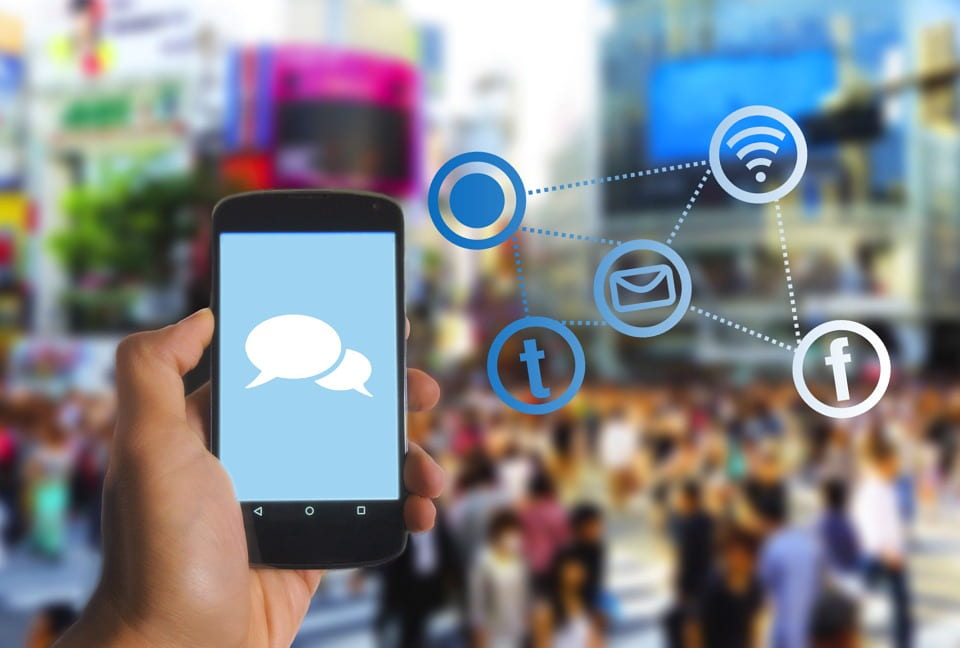Images of The Gang of 19 and “Capitol Crawl” will forever be remembered as pivotal moments in the U.S. disability rights movement alongside international achievements such as the first Paralympic Games in Rome, African Decade of Disabled People, and UN Convention on Rights of Persons with Disabilities. There are those who foster the value-based assumption that picketing, chanting, and public fervor are the appropriate methods to fighting the good fight. However, as digitalization rapidly enters our homes, schools, and places of work, modern technology offers a myriad of new ways to advocate for the rights of people with disabilities, namely social networking platforms and phone apps.
Many of those who engage with social networking platforms have heard of social media subcultures such as Asian-American Twitter, Black Twitter, and Feminist Twitter. These digital subcultures often address sociocultural issues related to their communities and galvanize captivating hashtags, like #BeingAsian, #BlackLivesMatter, and #MeToo, that take the mainstream media by storm. Among, and often intersecting with, these social causes is a growing phenomenon that could be referred to as Disability Twitter. Here, disabled activists share individual narratives coupled with hashtags, such as #AbledsAreExhausting, #DisabledAndCute, and #ThisIsAbleism, as well as address cultural, social, and political issues affecting the disability community through sentiments like #CripTheVote (accessible voting), #DisabilityTooWhite (limited representation of people of color with disabilities), and #SuckItAbleism (plastic straw ban). Such efforts have also been extended to social media platforms such as Facebook and Instagram, further capturing the attention of disability rights to internet users worldwide, generating dialogue and solutions that relate to accessibility.

With two-thirds of the globe connected by a mobile device, usage of phone apps has become the norm for many people. While many people use such apps for daily tasks and leisure, others utilize these platforms to amplify justice-related causes, namely access for people with disabilities. For example, Wheelmap is a service that allows users to locate and mark accessible places in seven languages. One does so by rating a respective space with a traffic light system that indicates green markings are wheelchair accessible, yellow markings have restricted wheelchair access, and red markings are not wheelchair accessible. Voice of Specially Abled People (VOSAP) is an India-based organization who created a phone app with the same name which crowdsources accessibility data so it can be used to inform community leaders and promote awareness. VOSAP also allows users to make an action pledge that supports people with disabilities so communities can correspond with allied parties. Parking Mobility is another phone app that offers a self-reporting mechanism, although this service allows users to report abuse of accessible parking spots. For partnering communities, such reports are forwarded to local law enforcement and citations are mailed to the registrant of the vehicle. Please contact Parking Mobility to inquire about getting your community involved in this program. There are also many other phone apps designed for personal assistive use such as Be My Eyes (navigation for blind and visually impaired), RogerVoice (subtitled phone calls), Miracle Modus (self-relief for Autistic persons), and Medication Reminder (people with Alzheimer’s and dementia). As a result of these diverse phone apps, there are multiple ways for people to self-advocate as well as spread information about accessibility.
As demonstrated, social media and digital technology have engendered revolutionary ways to address issues salient to the disability community, allowing self-advocates and allies to communicate about current challenges, successes, and resources. Therefore, simply opening your computer, tablet, or phone to navigate these issues, alongside other intersecting causes, shines a brighter light on the importance of disability rights, access, and representation in the 21st century.
Keep up with the latest announcements related to the upcoming Symposium on Disability Rights by following the IHR on Facebook, Twitter, and Instagram.

